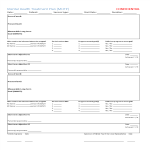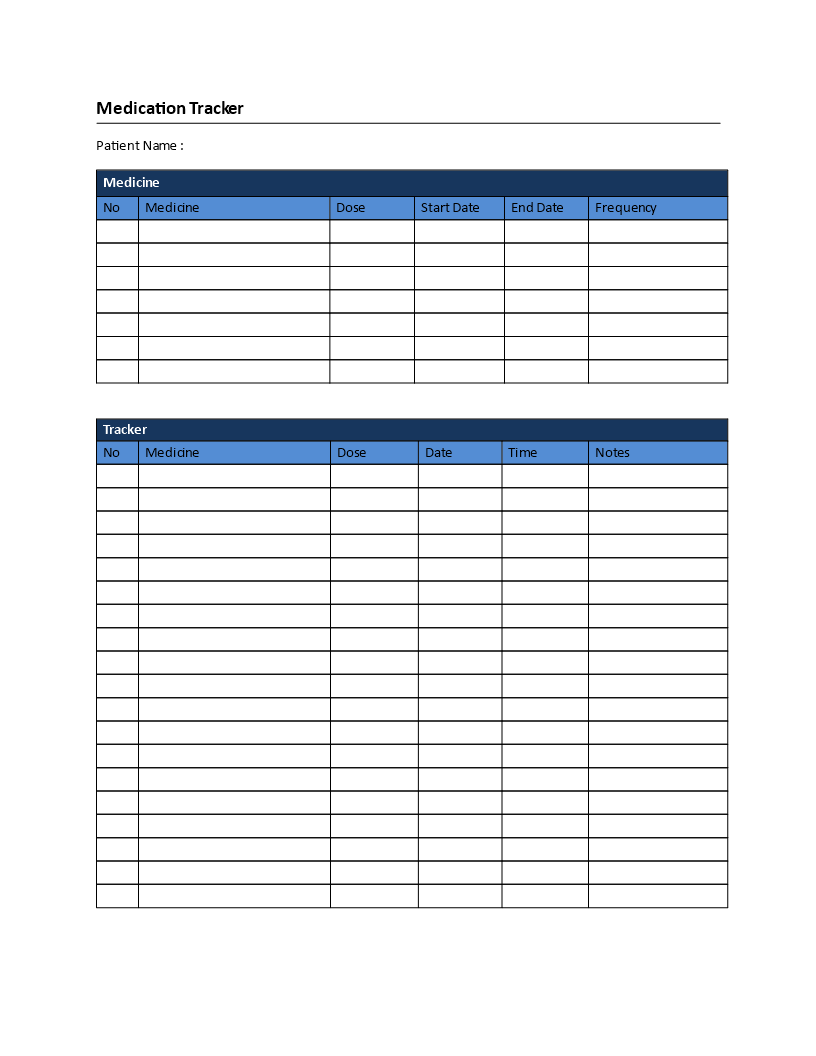Medication Tracker
Save, fill-In The Blanks, Print, Done!

Download Medication Tracker
Microsoft Word (.docx)Or select the format you want and we convert it for you for free:
- This Document Has Been Certified by a Professional
- 100% customizable
- This is a digital download (17.63 kB)
- Language: English
- We recommend downloading this file onto your computer.
What is a medicine tracker and how to use it? Have you been prescribed medicine and need a tracker template? You can download this template. It includes spaces for the name of the medication, dosage, time of day, and notes. It's a quick and easy way to keep track of your medication.
A medication tracker is a tool or system used to monitor and manage an individual's medication regimen. It helps people keep track of the medications they need to take when to take them, and whether they have taken them as prescribed. Medication tracking is especially important for individuals who are on multiple medications, have complex dosing schedules, or require strict adherence to their medication plan for health reasons.
Here are some common features and components of a medication tracker:
- Medication List: A comprehensive list of all the medications a person is prescribed. This includes the name of the medication, dosage, frequency (e.g., daily, twice a day), and the reason for taking it.
- Dosage Instructions: Clear instructions on how to take each medication, such as with or without food, at a specific time of day, or any special instructions provided by the healthcare provider.
- Schedule: A daily or weekly schedule that shows when each medication should be taken. This can be in the form of a table or a calendar.
- Reminders: Alerts or notifications to remind the individual when it's time to take their medication. These reminders can be set on a mobile app, alarm clock, or through other means like text messages or email.
- Checkboxes or Tracking Columns: Space for marking off or recording each time a medication is taken. This helps prevent double-dosing or missing a dose.
- Notes: A section for jotting down any side effects, changes in medication, or notes from healthcare providers.
- Refill Tracking: Some medication trackers also include a feature to track when medications need to be refilled, ensuring that the person doesn't run out of their prescribed medications.
- Emergency Contacts: Contact information for healthcare providers or emergency contacts in case of questions, concerns, or emergencies related to medications.
Medication trackers can be in the form of paper-based journals, digital apps, or online tools. Digital medication tracker apps are increasingly popular because they provide the convenience of setting reminders and offer features like medication interaction checking and the ability to share medication information with healthcare providers.
Using a medication tracker can help individuals stay organized, adhere to their prescribed medication regimen, and improve their overall health outcomes by ensuring they take their medications as prescribed. It can also be a useful tool for caregivers or family members who are assisting someone with medication management.
Download this medicine tracker template now and keep track of all your medications. It can help you stay organized and make sure you are taking the right medication at the right time. It also makes it easier to keep track of any side effects or complications you may have.
DISCLAIMER
Nothing on this site shall be considered legal advice and no attorney-client relationship is established.
Leave a Reply. If you have any questions or remarks, feel free to post them below.
Related templates
Latest templates
Latest topics
- Excel Templates
Where do I find templates for Excel? How do I create a template in Excel? Check these editable and printable Excel Templates and download them directly! - GDPR Compliance Templates
What do you need to become GDPR compliant? Are you looking for useful GDPR document templates to make you compliant? All these compliance documents will be available to download instantly... - Google Docs Templates
How to create documents in Google Docs? We provide Google Docs compatible template and these are the reasons why it's useful to work with Google Docs... - IT Security Standards Kit
What are IT Security Standards? Check out our collection of this newly updated IT Security Kit Standard templates, including policies, controls, processes, checklists, procedures and other documents. - Letter Format
How to format a letter? Here is a brief overview of common letter formats and templates in USA and UK and get inspirited immediately!
cheese



